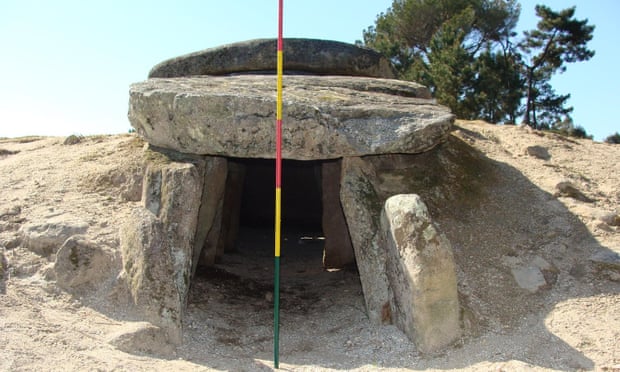Researchers think that the entrance passages to 6,000 year-old tombs could have been used to enhance visibility for ancient stargazers
The orientation of the tombs suggests that they are aligned to offer a view of Aldebaran, the brightest star in the constellation of Taurus. Photograph: University of Wales Trinity Saint David/Nottingham Trent University
Ancient passages to stone tombs could have been used by prehistoric humans to boost their view of the night skies as part of an ancient ritual, archaeologists have proposed.
Researchers say that the dark entrances to 6,000 year-old tombs in Portugal could have been an early form of astronomical tool that enhanced the visibility of the stars. In particular, they say, the orientation of the entrances to the passage graves suggests that they are aligned to offer a view of Aldebaran, the red star that is the brightest body in the constellation of Taurus.
The star might have been important to ancient communities who moved their herds and flocks to summer grazing grounds in the mountains each year. The annual event, the researchers argue, could have coincided with the star’s first appearance in the morning twilight each year. “This first rising of Aldebaran occurred at the end of April or beginning of May 6,000 years ago, so it would be a very good, very precise calendrical marker for them to know when it was time to move into the higher grounds,” said Dr Fabio Silva of the University of Wales Trinity Saint David.
Read the rest of this article...

No comments:
Post a Comment
Note: Only a member of this blog may post a comment.